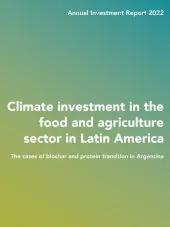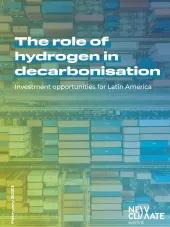This report, the first in a series of three, focuses on the policy landscape needed to enable a transition to net zero emissions, identifying key policies at a sectoral and national level to support investments towards decarbonisation in Argentina, Brazil, and Peru. It also provides a brief description of the current general investment environment and analyses factors that influence international climate finance flows.
Achieving the goal of limiting global temperature increase to 1.5°C above pre-industrial levels, as agreed under the Paris Agreement, requires a significant increase in low-carbon investments across all sectors of the economy. While there is a broad range of factors that determine the investment climate in a country and/or sector, this report builds on the assumption that a long-term vision in line with the Paris Agreement, underpinned by a comprehensive policy framework and incentives, is crucial to provide investors with the planning certainty to mobilise private capital. As a region highly vulnerable to the impacts of climate change, Latin American countries have demonstrated their commitment to the goals of the Paris Agreement to reduce global greenhouse gas emissions. Our analysis shows, however, that there are significant differences across countries and sectors in the diffusion of low-carbon technologies and activities and sectoral policies for scaling up low-carbon investments.
Key statements:
- In the near future, it will be important for governments to follow their national climate plans, including updated NDCs, with clearly defined mitigation measures and sector-level targets that are aligned with medium- and long-term decarbonisation goals.
- Sector-specific plans need to be embedded and aligned with an economy wide, long-term vision to reach national objectives and those of the Paris Agreement, including as part of the long-term strategies communicated to the UNFCCC.
- Constrained domestic budgets and public support measures need to be aligned with climate goals to send clear signals to investors and incentivise decarbonisation rather than counteract ongoing climate efforts.
- Clearly communicated commitments by governments to phase-out high carbon technologies and harmful policies, including, fossil fuel subsidies, give planning certainty to investors and can act as a stimulus for innovation and new business models.
- The public and private sectors need to work hand in hand. Governments play a key role to create a stable enabling environment to steer and foster private sector investment as well as protect investments from future risks. The private sector is crucial in its role as provider of technology and services, as well as source of investment and employment.








